Hybrid 1D + 2D Modelling for the Assessment of the Heat Transfer in the EU DEMO Water-Cooled Lithium-Lead Manifolds
Abstract
1. Introduction
- Inlet manifold for the FW cooling channels (labelled as “FW inlet” in Figure 2d)
- Outlet manifold for the FW cooling channels (labelled as “FW outlet” in Figure 2d)
- Inlet manifold for the BZ cooling tubes (labelled as “BZ inlet” in Figure 2d)
- Outlet manifold for the BZ cooling tubes (labelled as “BZ outlet” in Figure 2d)
- Coaxial PbLi inlet and outlet manifolds (labelled “PbLi” in Figure 2d)
2. Materials and Methods
- The temperature gradient in the poloidal direction in the BSS solid regions will be negligible;
- The temperature in the other internals (i.e., outside the BSS) of the BB will be almost identical at all poloidal locations, as effect of the cooling (which is designed to keep an almost uniform temperature, to reduce thermal stresses) [6].
3. Results
3.1. Two-Dimensional (2D) Finite Elements Analysis
3.2. One-Dimensional (1D) Finite Volume Analysis
- Without both radiative heat transfer towards VV and heat transfer towards the PbLi manifolds;
- With radiative heat transfer towards VV and without heat transfer towards the PbLi manifolds;
- With both radiative heat transfer towards VV and heat transfer towards the PbLi manifolds.
3.2.1. No Radiation, Adiabatic PbLi Manifolds
3.2.2. Radiation, Adiabatic PbLi Manifolds
3.2.3. Radiation, Heat Transfer with PbLi
4. Conclusions
Author Contributions
Funding
Acknowledgments
Conflicts of Interest
Nomenclature
| Abbreviations. | ||
| BB | Breeding blanket | |
| BC | Boundary condition | |
| BoP | Balance-of-plant | |
| BSS | Back supporting structure | |
| BZ | Breeding zone | |
| CFD | Computational fluid-dynamics | |
| CV | Control volume | |
| DWT | Double-walled tubes | |
| ENEA | Italian national agency for new technologies, energy and sustainable economic development | |
| EU DEMO | European demonstration fusion power reactor | |
| FE | Finite element | |
| FV | Finite volume | |
| FW | First wall | |
| GCI | Grid convergence index | |
| GETTHEM | GEneral Tokamak THErmal-hydraulic Model | |
| HTC | Heat transfer coefficient | |
| IAPWS | International association for the properties of water and steam | |
| IF97 | Industrial formulation ‘97 | |
| IM | Inlet manifold | |
| MHD | Magnetohydrodynamics | |
| OM | Outlet manifold | |
| RE | Richardson extrapolation | |
| TBM | Test blanket module | |
| VV | Vacuum vessel | |
| WCLL | Water-Cooled Lithium-Lead | |
| Symbols. | ||
| A | Area of cross section | m² |
| cp | Specific heat at constant pressure | J/(kg·K) |
| D | Diameter | m |
| e | Specific internal energy | J/kg |
| f | Darcy friction factor | - |
| fv | View factor | - |
| h | Heat transfer coefficient, specific enthalpy | W/(m²·K), J/kg |
| i | Control volume index | - |
| k | Thermal conductivity | W/(m K) |
| L | Characteristic length | m |
| m | Mass | kg |
| Mass flow rate | kg/s | |
| Nu | Nusselt number | - |
| p | Order of convergence, pressure | -, Pa |
| Pe | Péclet number | - |
| Pr | Prandtl number | - |
| Q | Heat flow | W |
| q″ | Heat flux | W/m² |
| q‴ | Volumetric power | W/m³ |
| R | Thermal resistance | K/W |
| r | Refinement ratio | - |
| R″ | Thermal resistance per unit surface | K·m²/W |
| R² | Coefficient of determination | - |
| Re | Reynolds number | - |
| S | Surface area | m² |
| T | Temperature | K |
| ΔT | Temperature difference | K |
| T | Thickness, time | m, s |
| U | Thermal transmittance (overall heat transfer coefficient) | W/(m²·K) |
| v | Velocity | m/s |
| w | Test function | - |
| x | Direction along fluid motion | m |
| Greek. | ||
| ε | Emissivity | - |
| µ | Dynamic viscosity | Pa s |
| ρ | Density | kg/m³ |
| σ | Stefan–Boltzmann constant | W/(m²·K4) |
| ϕ | Heat flux | W/m² |
| Ω | Domain | - |
| Subscripts. | ||
| 0 | Imposed (Dirichlet BC), RE-computed value | |
| 1 | Fine grid | |
| 2 | Medium grid | |
| 3 | Coarse grid | |
| BZ | Breeding zone | |
| coarse | Coarse grid | |
| computed | Value computed by the code | |
| D | Dirichlet | |
| eff | Effective | |
| fine | Fine grid | |
| FW | First wall | |
| g | Fluid | |
| h | Hydraulic | |
| i | Control volume index | |
| in | Inlet | |
| medium | Medium grid | |
| N | Neumann | |
| nominal | Nominal or design value | |
| out | Outlet | |
| R,c | Convective Robin | |
| R,r | Radiative Robin | |
| s | Slug | |
| VV | Vacuum vessel | |
References
- Gliss, C. DEMO reference configuration model. In EUROfusion Internal Report EFDA_D_2MUNPL; 2020; (unpublished). [Google Scholar]
- Donné, A.J.H.; Morris, W.; Litaudon, X.; Hidalgo, H.; McDonald, D.; Zohm, H.; Diegele, E.; Möslang, A.; Nordlund, K.; Federici, G.; et al. European Research Roadmap to the Realisation of Fusion Energy. Available online: https://www.euro-fusion.org/fileadmin/user_upload/EUROfusion/Documents/TopLevelRoadmap.pdf (accessed on 7 July 2020).
- Aymar, R.; Barabaschi, P.; Shimomura, Y. The ITER design. Plasma Phys. Control. Fusion 2002, 44, 519–565. [Google Scholar] [CrossRef]
- Cismondi, F.; Boccaccini, L.; Aiello, G.; Aubert, J.; Bachmann, C.; Barrett, T.; Barucca, L.; Bubelis, E.; Ciattaglia, S.; Del Nevo, A.; et al. Progress in EU Breeding Blanket design and integration. Fusion Eng. Des. 2018, 136, 782–792. [Google Scholar] [CrossRef]
- Del Nevo, A.; Arena, P.; Caruso, G.; Chiovaro, P.; Di Maio, P.; Eboli, M.; Edemetti, F.; Forgione, N.; Forte, R.; Froio, A.; et al. Recent progress in developing a feasible and integrated conceptual design of the WCLL BB in EUROfusion project. Fusion Eng. Des. 2019, 146, 1805–1809. [Google Scholar] [CrossRef]
- Arena, P.; Burlon, R.; Caruso, G.; Catanzaro, I.; Di Gironimo, G.; Di Maio, P.A.; Di Piazza, I.; Eboli, M.; Edemetti, F.; Forgione, N.; et al. WCLL BB design and Integration studies 2019 activities. In EUROfusion Internal Report EFDA_D_2P5NE5; 2020; (unpublished). [Google Scholar]
- Todreas, N.E.; Kazimi, M.S. Nuclear Systems: Thermal Hydraulic Fundamentals, 2nd ed.; CRC Press: Boca Raton, FL, USA, 2012. [Google Scholar]
- Kovari, M.; Coleman, M.; Cristescu, I.; Smith, R. Tritium resources available for fusion reactors. Nucl. Fusion 2017, 58, 026010. [Google Scholar] [CrossRef]
- The RELAP5 Code Development Team. RELAP5/Mod3 Code Manual; Idaho National Laboratory: Idaho Falls, ID, USA, 1995.
- Merrill, B.J.; Humrickhouse, P.; Moore, R.L. A recent version of MELCOR for fusion safety applications. Fusion Eng. Des. 2010, 85, 1479–1483. [Google Scholar] [CrossRef]
- Froio, A.; Bachmann, C.; Cismondi, F.; Savoldi, L.; Zanino, R. Dynamic thermal-hydraulic modelling of the EU DEMO HCPB breeding blanket cooling loops. Prog. Nucl. Energy 2016, 93, 116–132. [Google Scholar] [CrossRef]
- Froio, A.; Cismondi, F.; Savoldi, L.; Zanino, R. Thermal-Hydraulic Analysis of the EU DEMO Helium-Cooled Pebble Bed Breeding Blanket Using the GETTHEM Code. IEEE Trans. Plasma Sci. 2018, 46, 1436–1445. [Google Scholar] [CrossRef]
- Froio, A.; Casella, F.; Cismondi, F.; Del Nevo, A.; Savoldi, L.; Zanino, R. Dynamic thermal-hydraulic modelling of the EU DEMO WCLL breeding blanket cooling loops. Fusion Eng. Des. 2017, 124, 887–891. [Google Scholar] [CrossRef]
- Froio, A.; Del Nevo, A.; Martelli, E.; Savoldi, L.; Zanino, R. Parametric thermal-hydraulic analysis of the EU DEMO Water-Cooled Lithium-Lead First Wall using the GETTHEM code. Fusion Eng. Des. 2018, 137, 257–267. [Google Scholar] [CrossRef]
- Froio, A.; Bertinetti, A.; Savoldi, L.; Zanino, R.; Cismondi, F.; Ciattaglia, S.; Čepin, M.; Briš, R. Benchmark of the GETTHEM Vacuum Vessel Pressure Suppression System (VVPSS) model for a helium-cooled EU DEMO blanket. In Safety and Reliability—Theory and Applications, Proceedings of the 27th European Safety and Reliability Conference, Portorož, Slovenia, 18–22 June 2017; Cepin, M., Bris, R., Eds.; CRC Press: Boca Raton, FL, USA, 2017. [Google Scholar] [CrossRef]
- Froio, A.; Bertinetti, A.; Ciattaglia, S.; Cismondi, F.; Savoldi, L.; Zanino, R. Modelling an in-vessel loss of coolant accident in the EU DEMO WCLL breeding blanket with the GETTHEM code. Fusion Eng. Des. 2018, 136, 1226–1230. [Google Scholar] [CrossRef]
- Colebrook, C.F. Turbulent flow in pipes, with particular reference to the transition region between the smooth and rough pipe laws. J. Inst. Civ. Eng. 1939, 11, 133–156. [Google Scholar] [CrossRef]
- Zanino, R.; Santagati, P.; Savoldi, L.; Martinez, A.; Nicollet, S. Friction factor correlation with application to the central cooling channel of cable-in-conduit super-conductors for fusion magnets. IEEE Trans. Appl. Supercond. 2000, 10, 1066–1069. [Google Scholar] [CrossRef]
- Fend, T.; Schwarzbözl, P.; Smirnova, O.; Schöllgen, D.; Jakob, C. Numerical investigation of flow and heat transfer in a volumetric solar receiver. Renew. Energy 2013, 60, 655–661. [Google Scholar] [CrossRef]
- Chun, M.-H.; Kim, Y.-S.; Park, J.-W. An investigation of direct condensation of steam jet in subcooled water. Int. Commun. Heat Mass Transf. 1996, 23, 947–958. [Google Scholar] [CrossRef]
- Oberkampf, W.L.; Roy, C.J. Verification and Validation in Scientific Computing by William L. Oberkampf; Cambridge University Press (CUP): Cambridge, UK, 2010. [Google Scholar]
- Rizzo, E.; Heller, R.; Richard, L.S.; Zanino, R. Computational thermal-fluid dynamics analysis of the laminar flow regime in the meander flow geometry characterizing the heat exchanger used in high temperature superconducting current leads. Fusion Eng. Des. 2013, 88, 2749–2756. [Google Scholar] [CrossRef]
- Rizzo, E.; Heller, R.; Richard, L.S.; Zanino, R. CtFD-based correlations for the thermal–hydraulics of an HTS current lead meander-flow heat exchanger in turbulent flow. Cryogenics 2013, 53, 51–60. [Google Scholar] [CrossRef]
- Jayakumar, J.; Mahajani, S.; Mandal, J.; Vijayan, P.; Bhoi, R. Experimental and CFD estimation of heat transfer in helically coiled heat exchangers. Chem. Eng. Res. Des. 2008, 86, 221–232. [Google Scholar] [CrossRef]
- Emmel, M.G.; Abadie, M.O.; Mendes, N. New external convective heat transfer coefficient correlations for isolated low-rise buildings. Energy Build. 2007, 39, 335–342. [Google Scholar] [CrossRef]
- Gulawani, S.S.; Joshi, J.B.; Shah, M.S.; Ramaprasad, C.S.; Shukla, D.S. CFD analysis of flow pattern and heat transfer in direct contact steam condensation. Chem. Eng. Sci. 2006, 61, 5204–5220. [Google Scholar] [CrossRef]
- Cagnoli, M.; De La Calle, A.; Pye, J.; Savoldi, L.; Zanino, R. A CFD-supported dynamic system-level model of a sodium-cooled billboard-type receiver for central tower CSP applications. Sol. Energy 2019, 177, 576–594. [Google Scholar] [CrossRef]
- Zanino, R.; Froio, A.; Savoldi, L.; Zanino, R. Multi-scale modular analysis of open volumetric receivers for central tower CSP systems. Sol. Energy 2019, 190, 195–211. [Google Scholar] [CrossRef]
- Hecht, F. New development in freefem++. J. Numer. Math. 2012, 20, 251–265. [Google Scholar] [CrossRef]
- Bergman, T.L.; Lavine, A.S.; Incropera, F.P.; Dewitt, D.P. Fundamentals of Heat and Mass Transfer, 7th ed.; John Wiley & Sons: Hoboken, NJ, USA, 2011; pp. 8–10, 82–87, 90–91, 114, 872–873. [Google Scholar]
- Quarteroni, A. Numerical Models for Differential Problems; Springer Science and Business Media LLC: Milan, Italy, 2009; pp. 31–196. [Google Scholar]
- Takahashi, M.; Aritomi, M.; Inoue, A.; Matsuzaki, M. MHD pressure drop and heat transfer of lithium single-phase flow in a rectangular channel under transverse magnetic field. Fusion Eng. Des. 1998, 42, 365–372. [Google Scholar] [CrossRef]
- Gnielinski, V. New equations for heat and mass transfer in the turbulent pipe and channel flow. Int. J. Chem. Eng. 1976, 16, 359–368. [Google Scholar]
- Venturini, A.; Martelli, D. Literature Review of PbLi Alloys properties. In EUROfusion Internal Report EFDA_D_2N34UH; 2017; (unpublished). [Google Scholar]
- The International Association for the Properties of Water and Steam. Revised Release on the IAPWS Industrial Formulation 1997 for the Thermodynamic Properties of Water and Steam. Available online: http://www.iapws.org/relguide/IF97-Rev.html (accessed on 7 July 2020).
- Roache, P.J. Verification and Validation in Computational Science and Engineering; Hermosa Publishers: Albuquerque, NM, USA, 1998. [Google Scholar]
- Munson, B.R.; Okiishi, T.H.; Huebsch, W.W.; Rothmayer, A.P. Fluid Mechanics, 7th ed.; John Wiley & Sons: Hoboken, NJ, USA, 2013; pp. 290–292. [Google Scholar]
- Casella, F.; Leva, A. Modelling of thermo-hydraulic power generation processes using Modelica. Math. Comput. Model. Dyn. Syst. 2006, 12, 19–33. [Google Scholar] [CrossRef]
- Froio, A.; Bertinetti, A.; Ghidersa, B.-E.; Hernández, F.A.; Savoldi, L.; Zanino, R. Analysis of the Flow Distribution in the Back Supporting Structure Manifolds of the HCPB Breeding Blanket for the EU DEMO Fusion Reactor. Fusion Sci. Technol. 2019, 75, 365–371. [Google Scholar] [CrossRef]
- Bertinetti, A.; Froio, A.; Ghidersa, B.-E.; Gonzalez, F.A.H.; Savoldi, L.; Zanino, R. Hydraulic modeling of a segment of the EU DEMO HCPB breeding blanket back supporting structure. Fusion Eng. Des. 2018, 136, 1186–1190. [Google Scholar] [CrossRef]
- Bertinetti, A.; Froio, A.; Savoldi, L.; Zanino, R. Sizing of a scaled-down mock-up of a HCLL BSS segment. In EUROfusion Internal Report EFDA_D_2N8ZKP; 2018; (unpublished). [Google Scholar]
- Forest, L.; Aktaa, J.; Boccaccini, L.; Emmerich, T.; Eugen-Ghidersa, B.; Fondant, G.; Froio, A.; Puma, A.L.; Namburi, H.; Neuberger, H.; et al. Status of the EU DEMO breeding blanket manufacturing R&D activities. Fusion Eng. Des. 2020, 152, 111420. [Google Scholar] [CrossRef]
- Tassone, A.; Caruso, G.; del Nevo, A. Influence of PbLi hydraulic path and integration layout on MHD pressure losses. Fusion Eng. Des. 2020, 155, 111517. [Google Scholar] [CrossRef]
- Siriano, S.; Tassone, A.; Caruso, G.; Del Nevo, A. MHD forced convection flow in dielectric and electro-conductive rectangular annuli. Fusion Eng. Des. 2020, 159, 111773. [Google Scholar] [CrossRef]
- Siriano, S.; Tassone, A.; Caruso, G.; del Nevo, A. Electromagnetic coupling phenomena in co-axial rectangular channels. Fusion Eng. Des. 2020, 160, 111854. [Google Scholar] [CrossRef]
- Froio, A. Multi-Scale Thermal-Hydraulic Modelling for the Primary Heat Transfer System of a Tokamak. Ph.D. Thesis, Politecnico di Torino, Torino, 28 March 2018. [Google Scholar] [CrossRef]
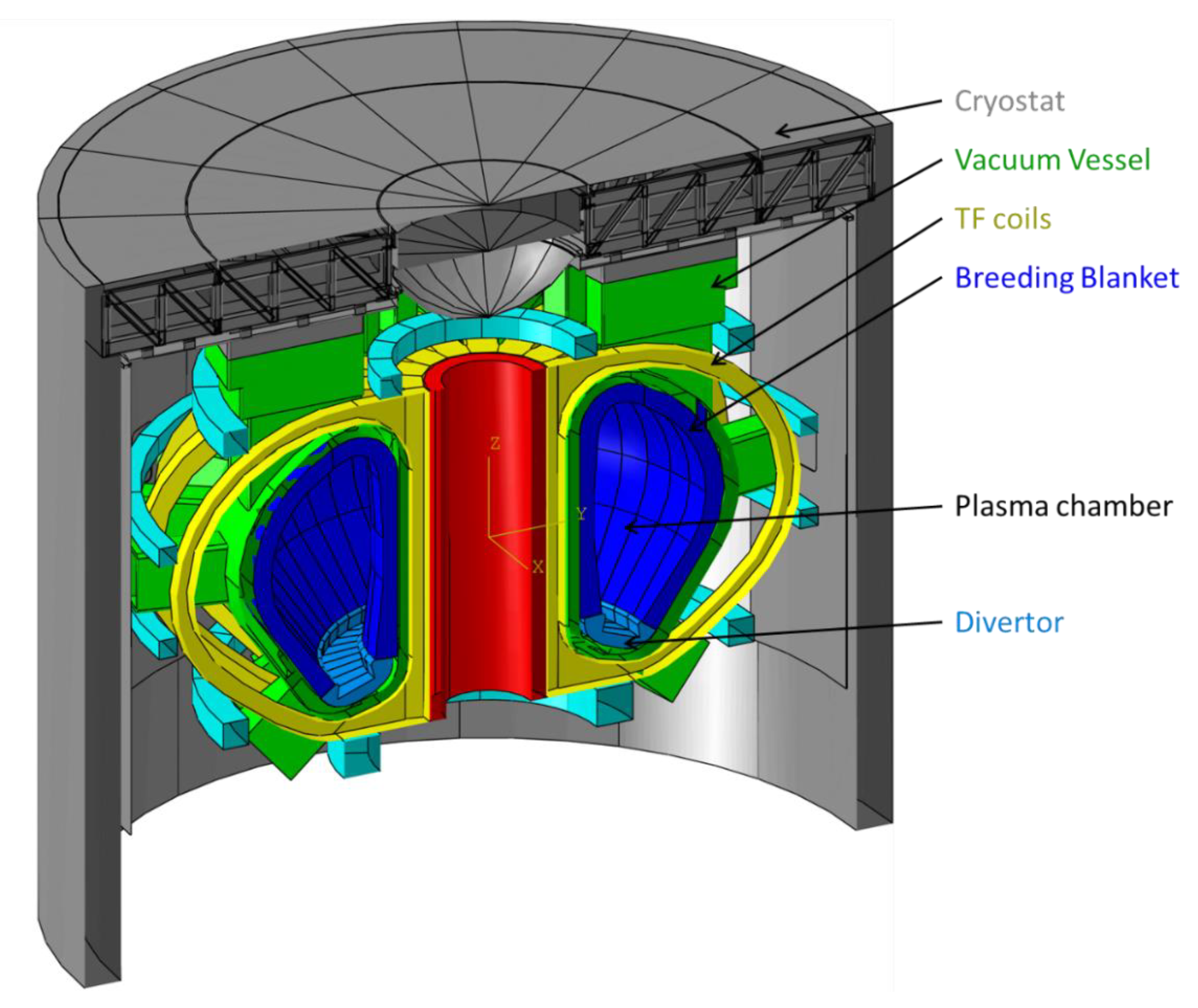


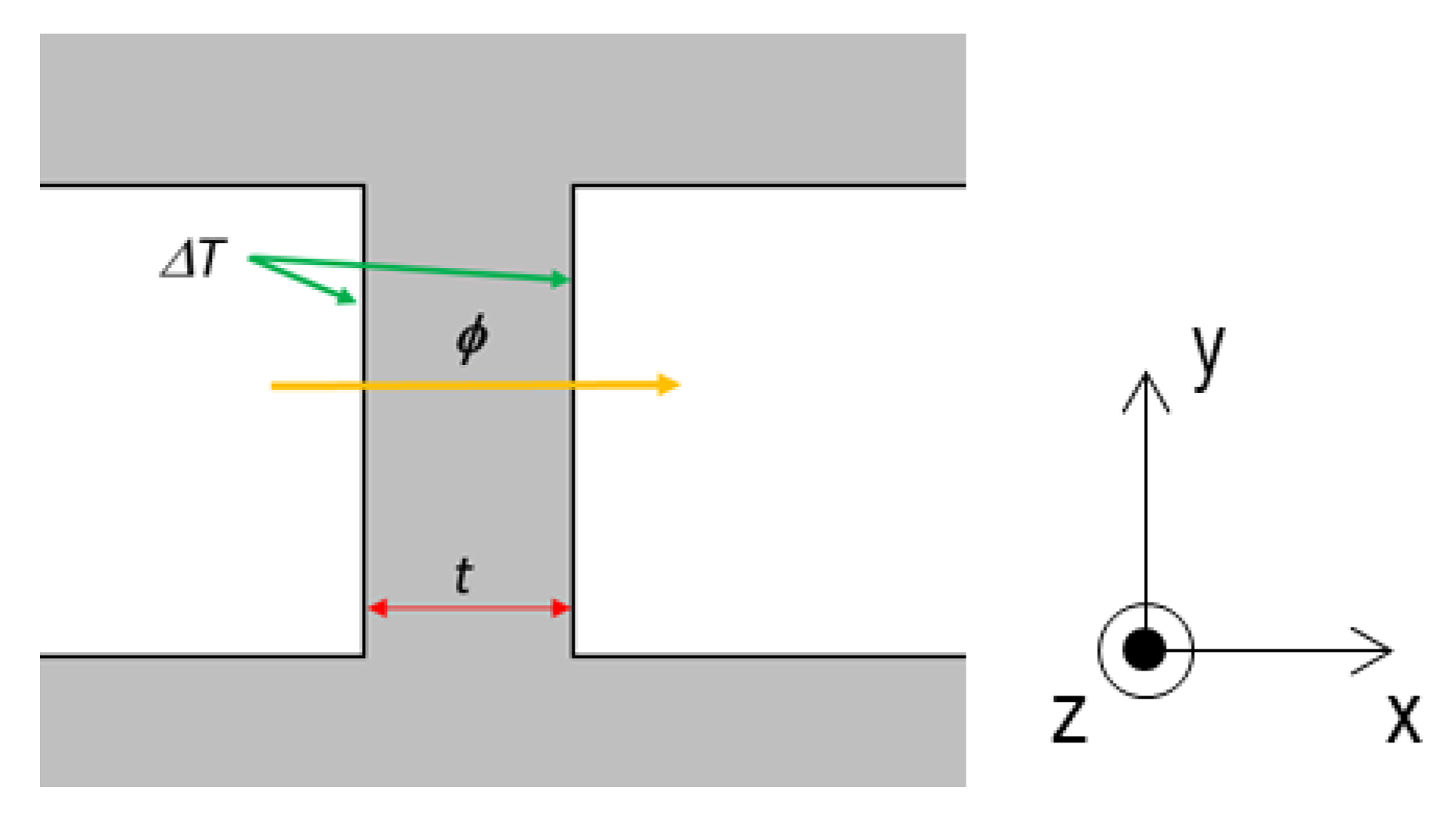

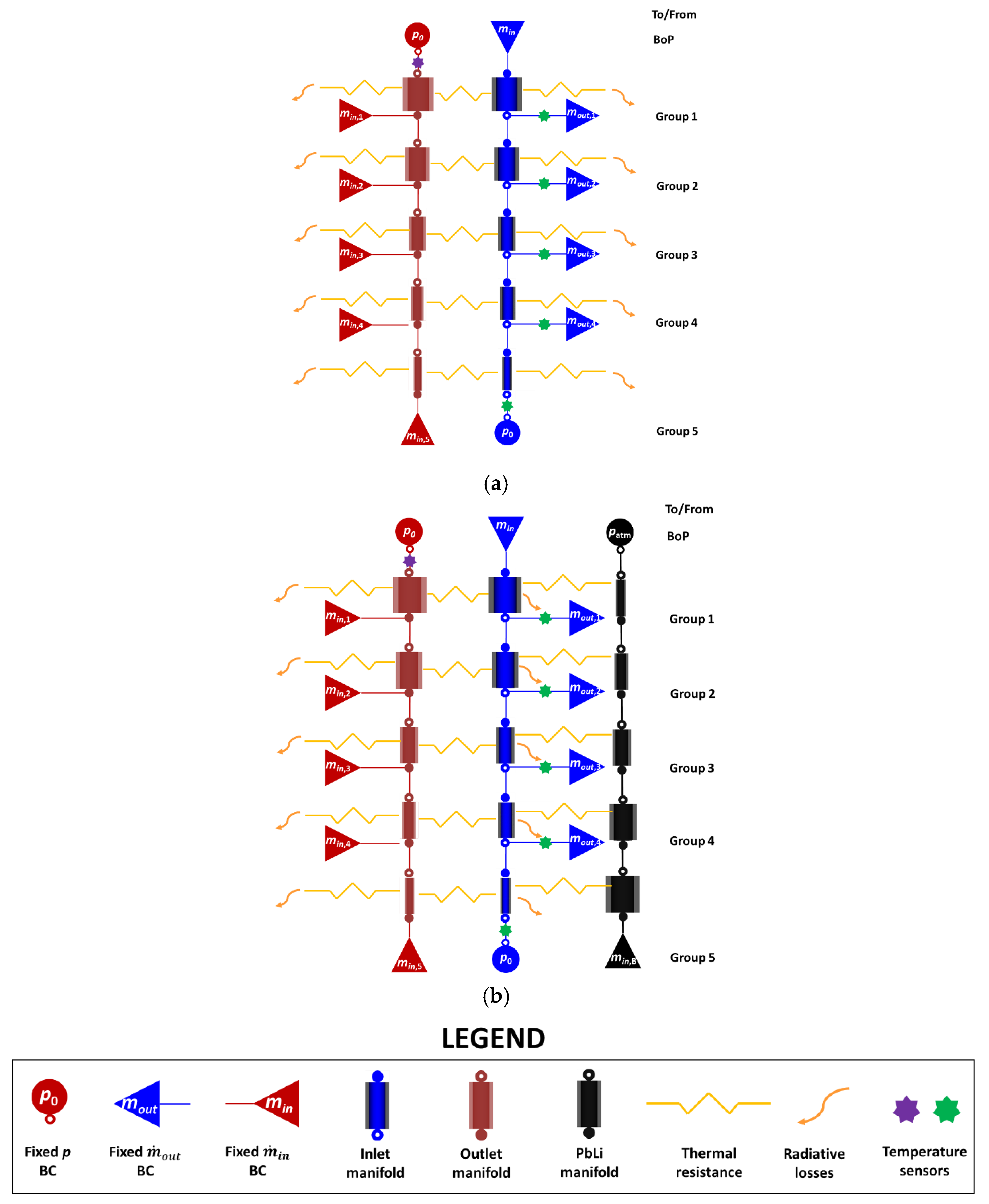
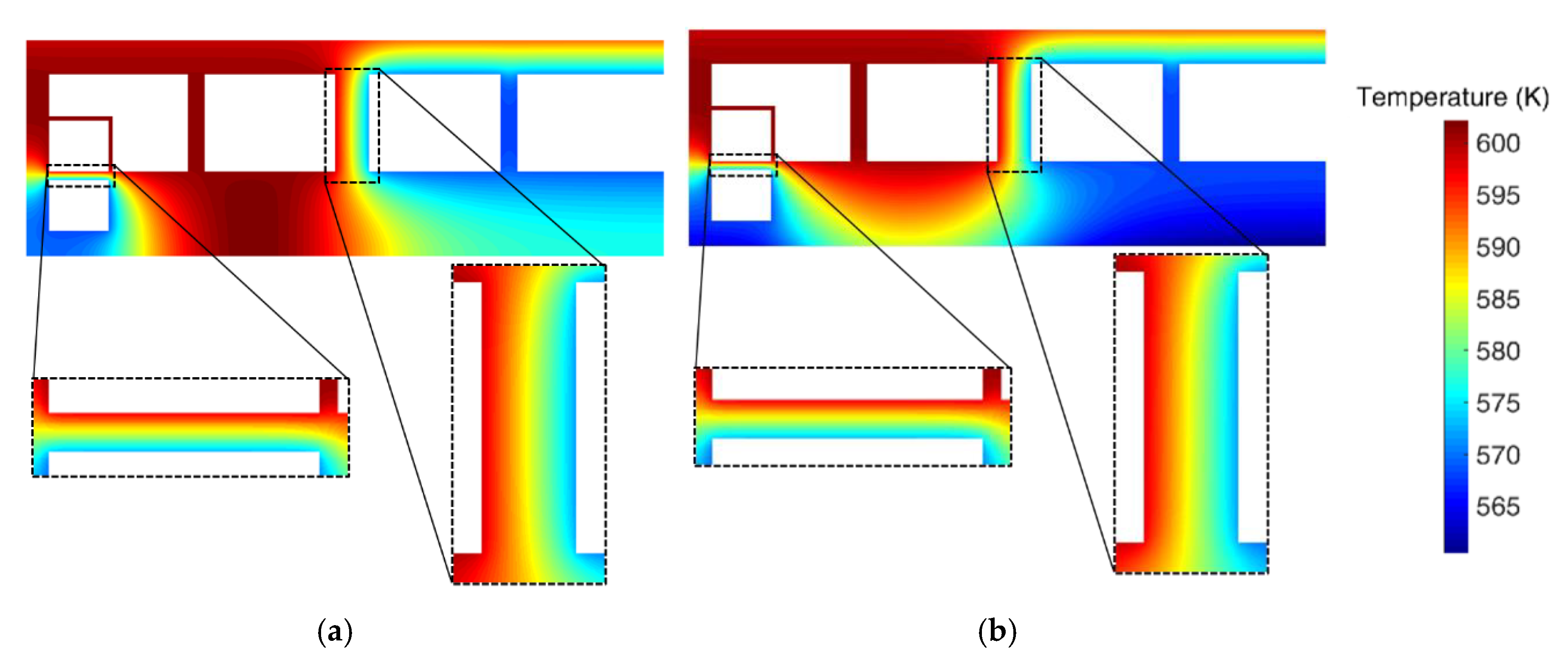
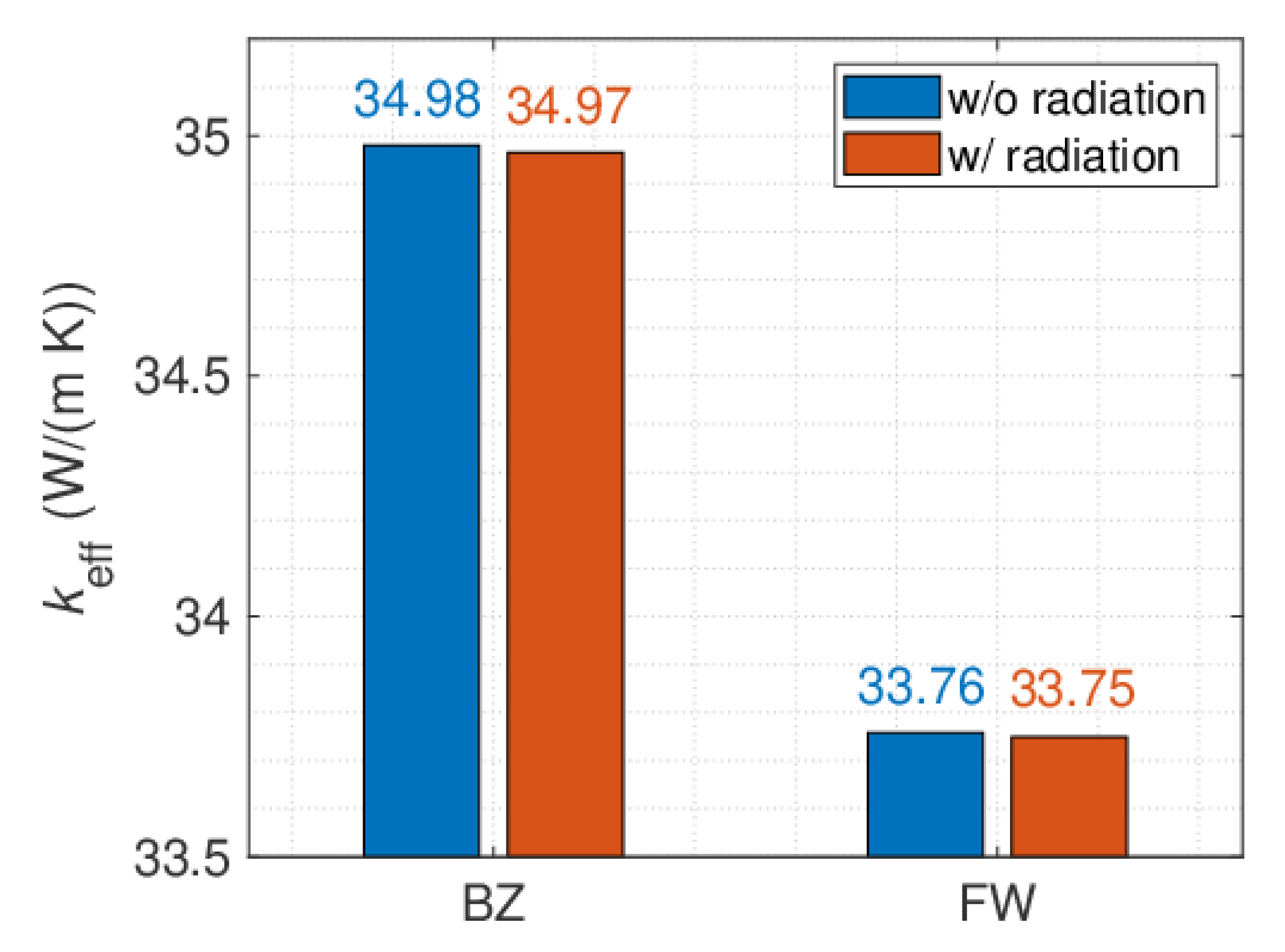
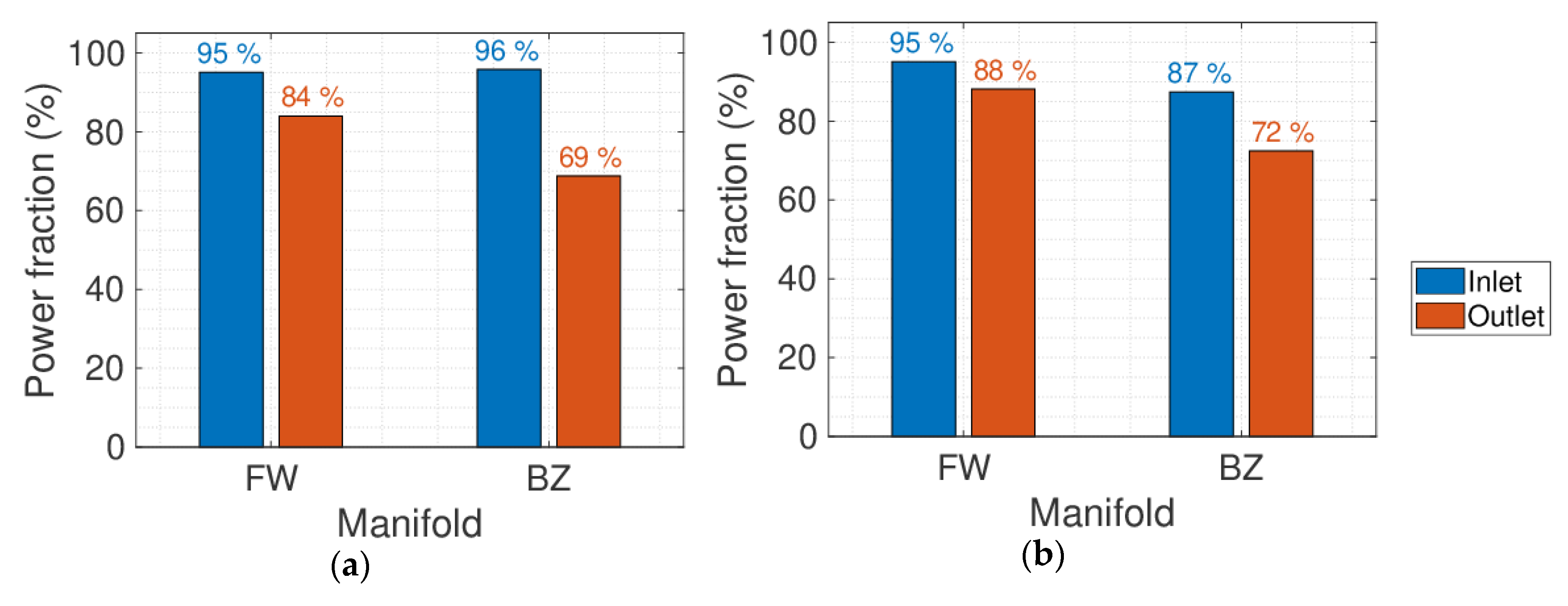
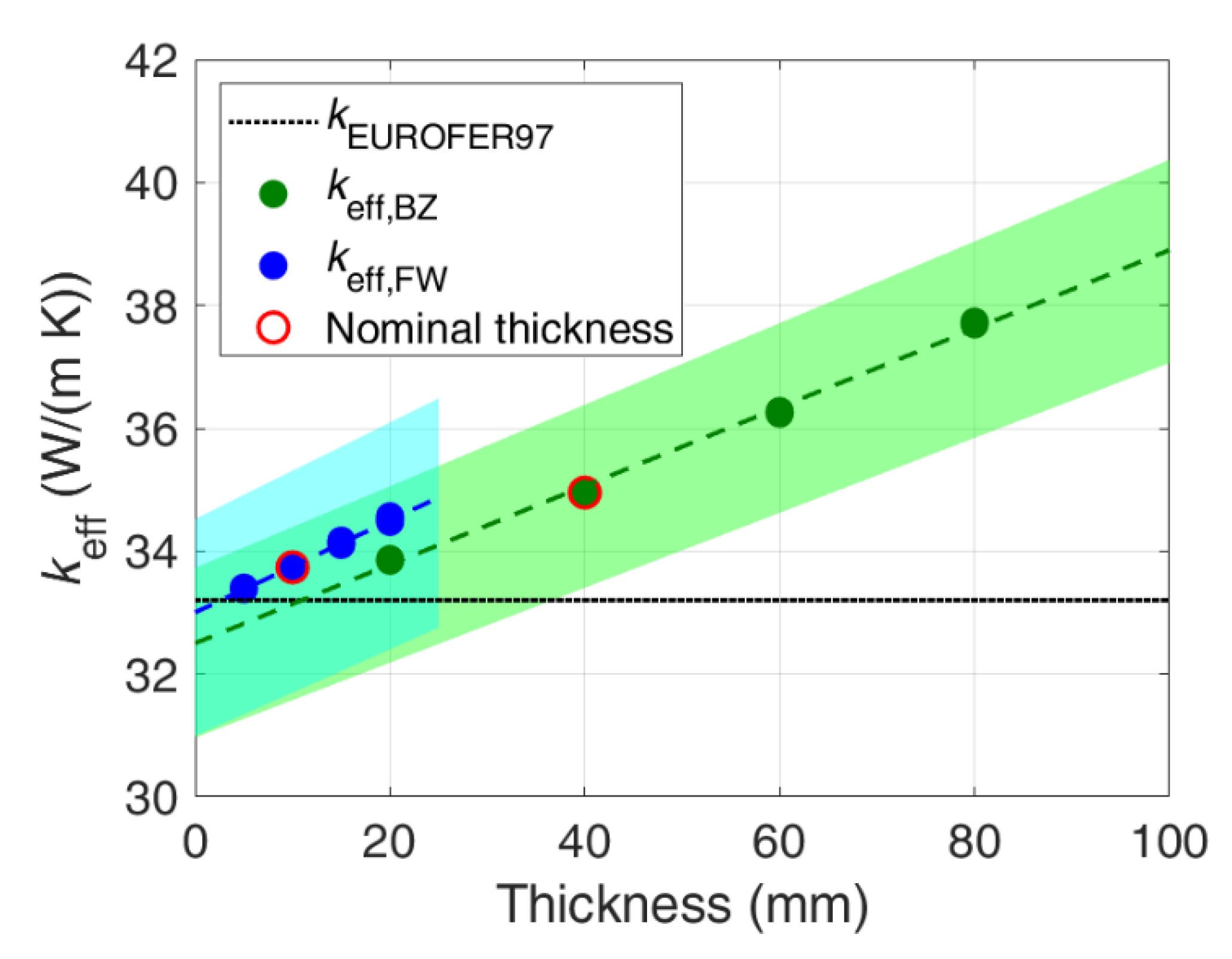

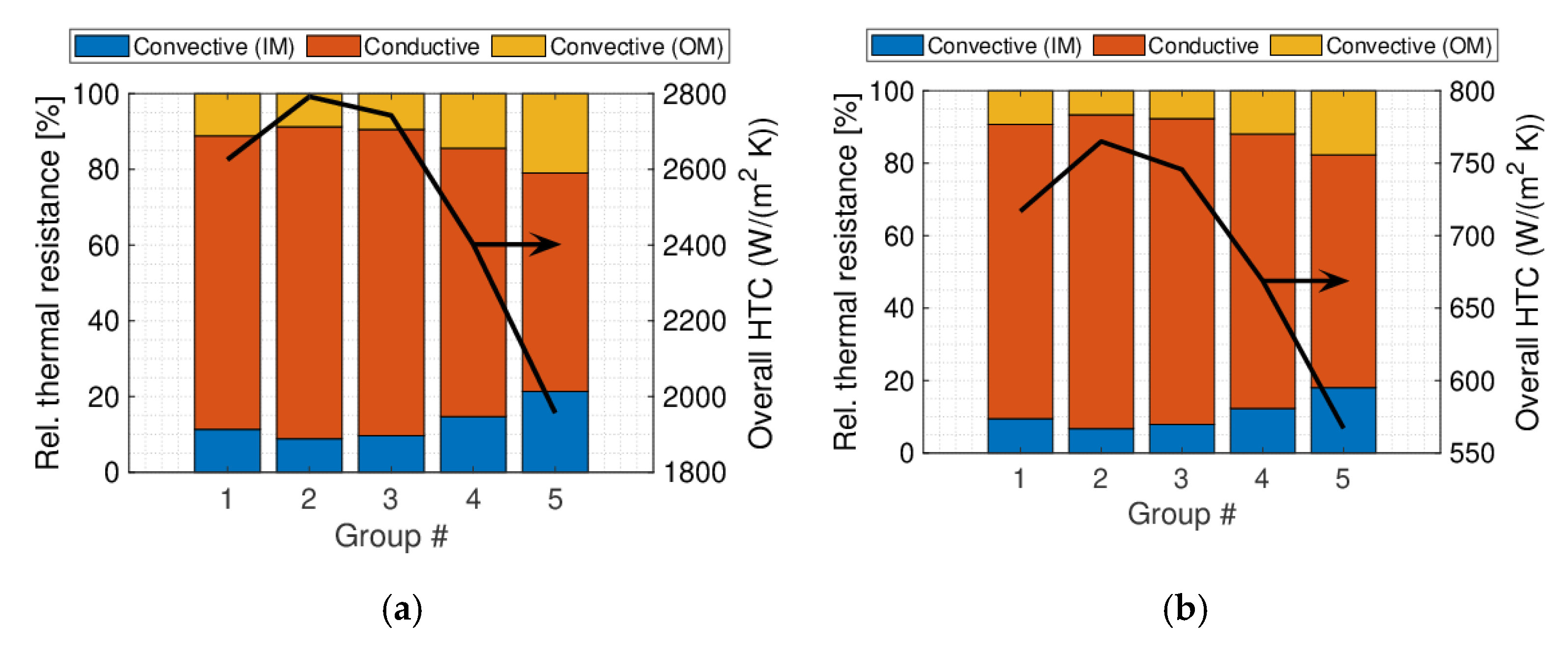
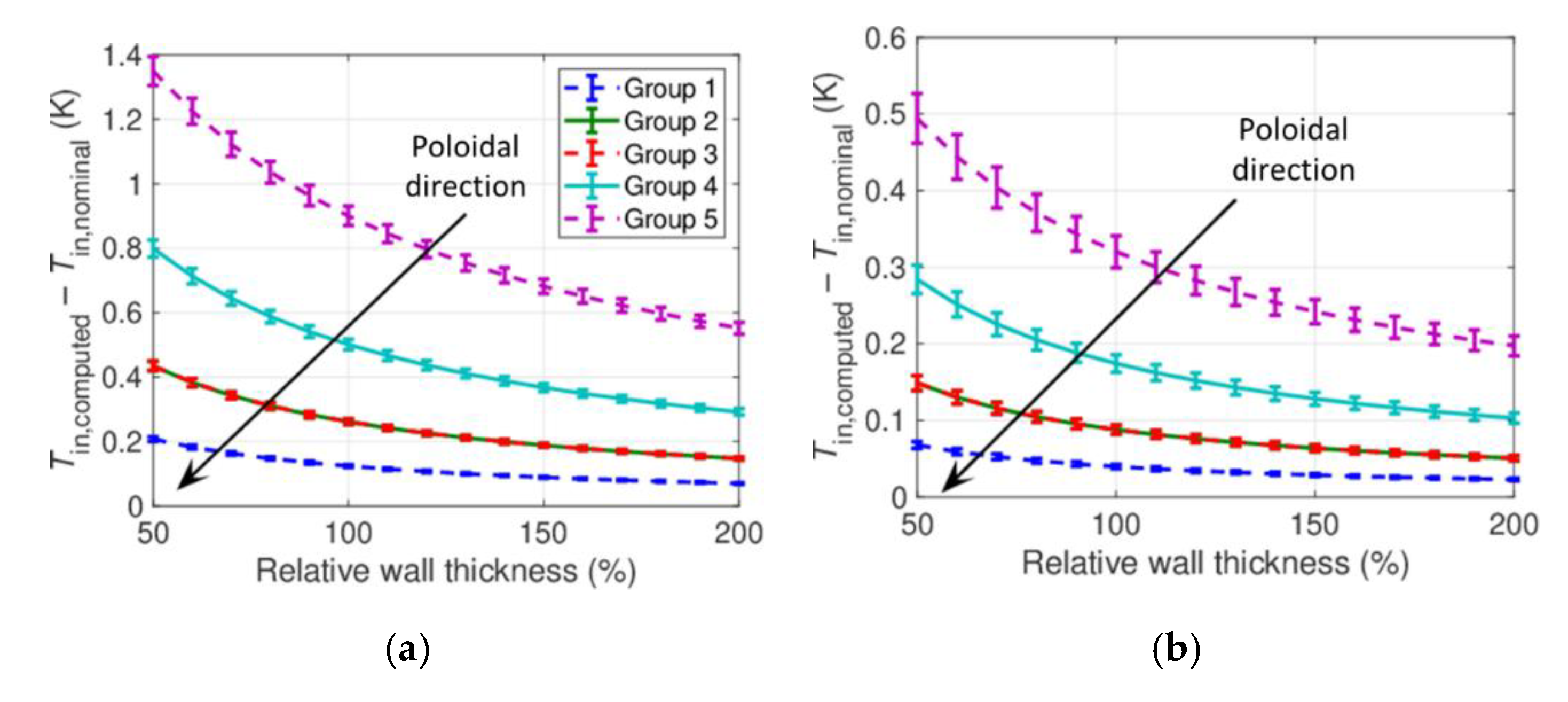
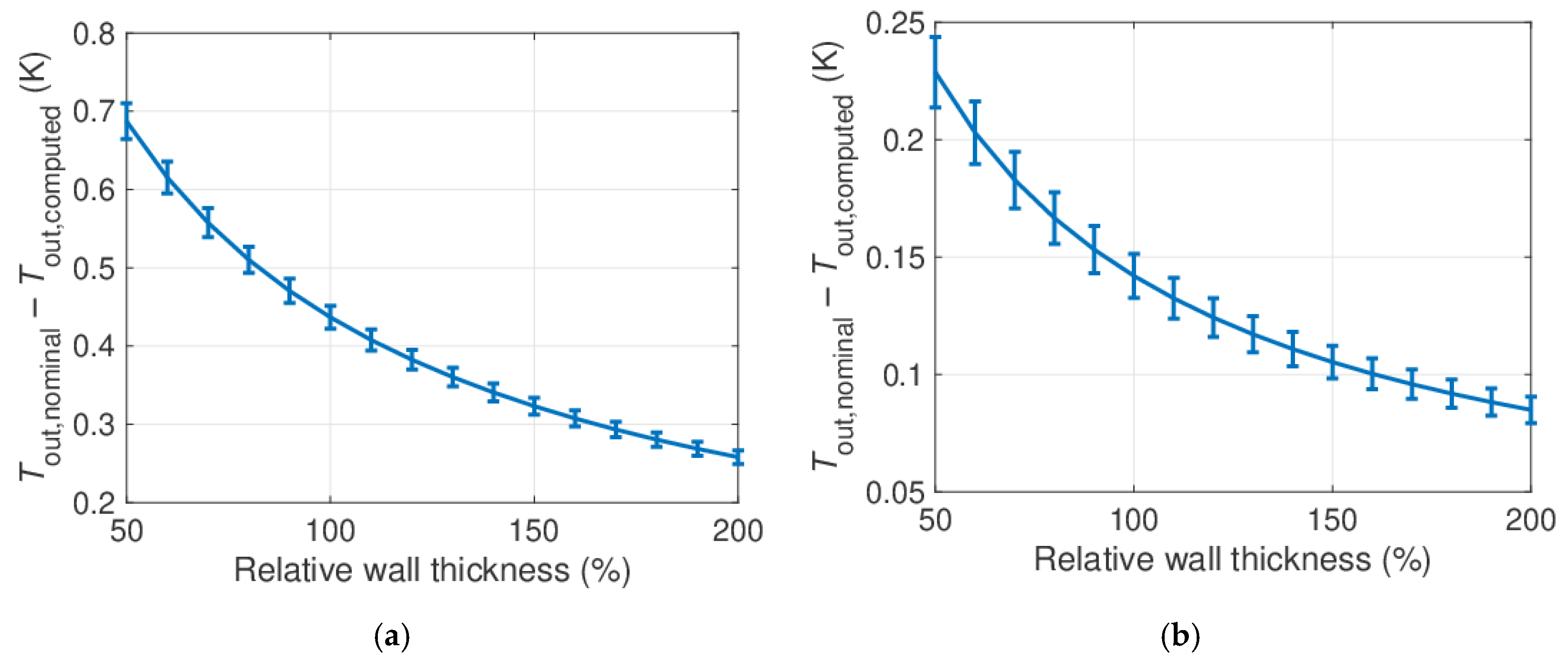
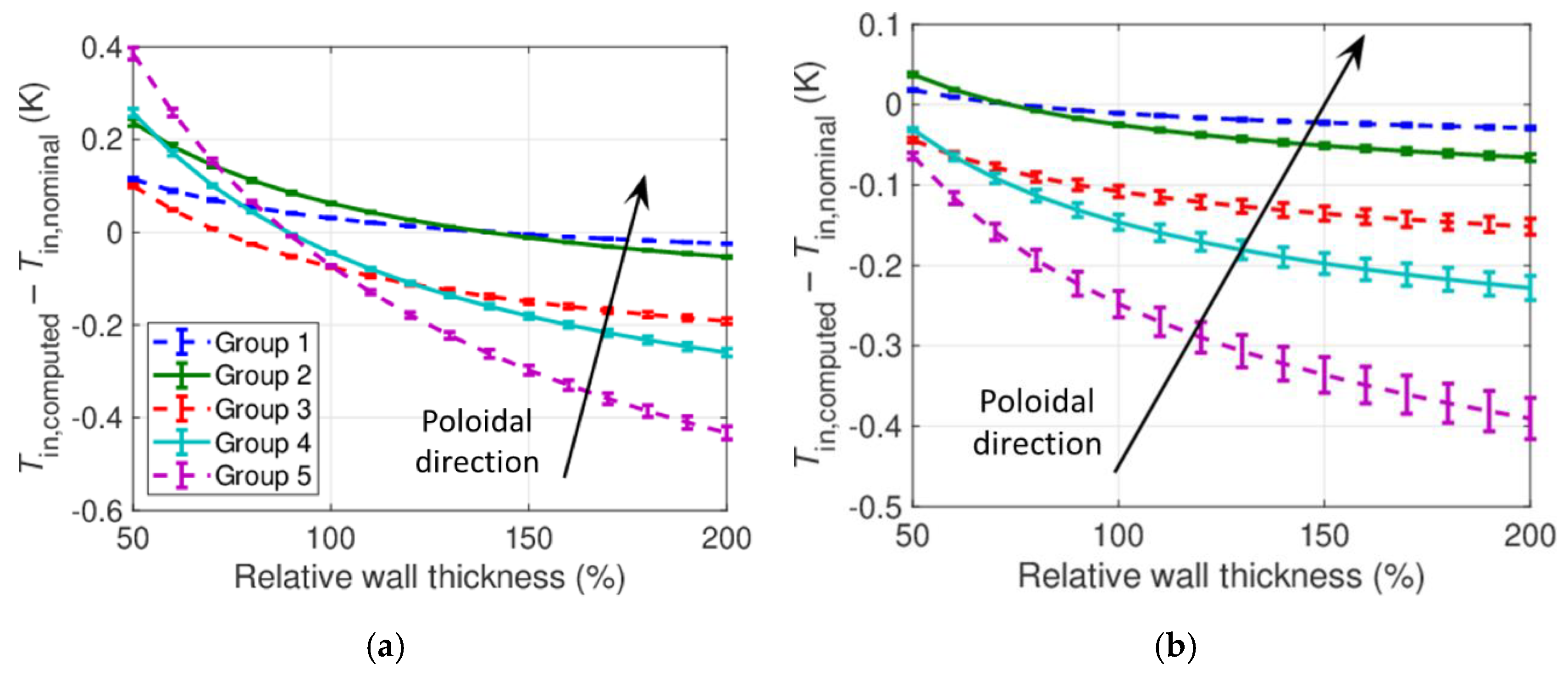
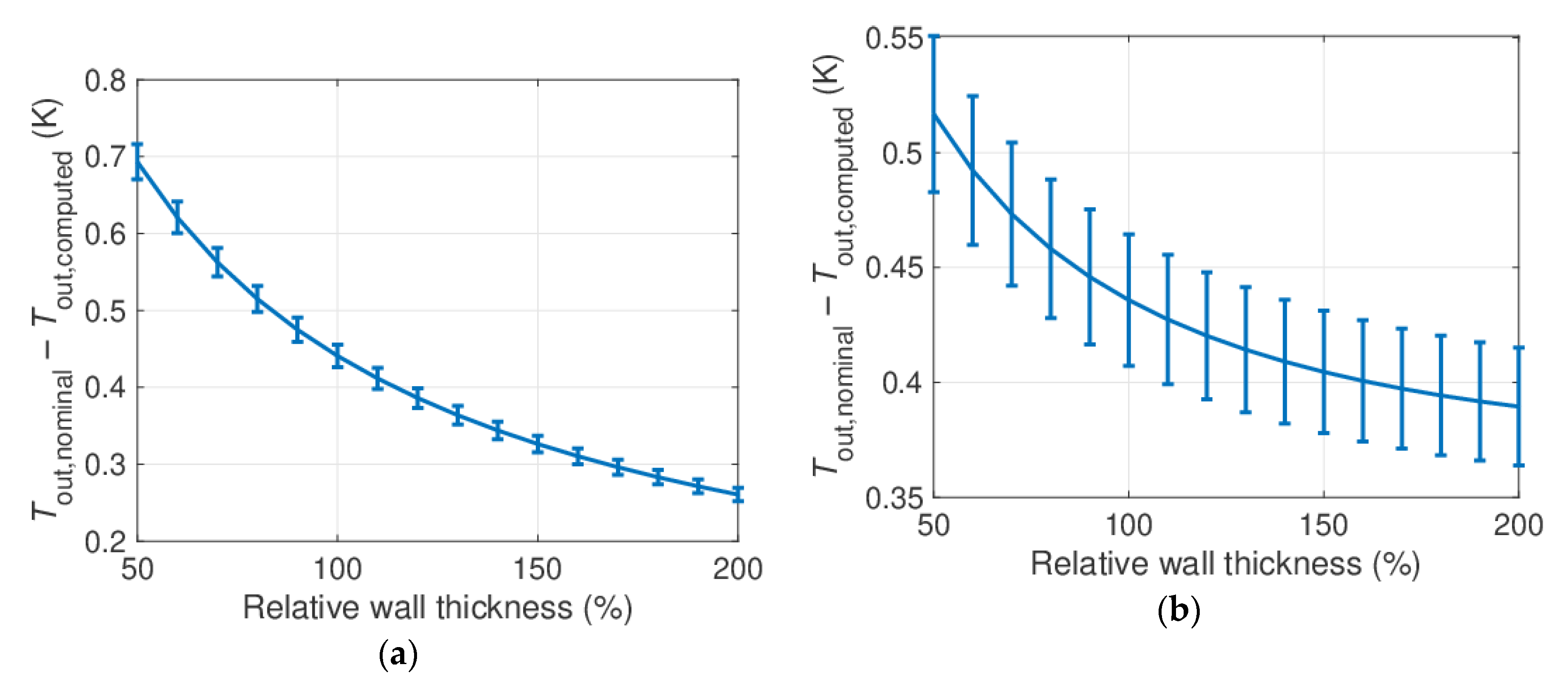
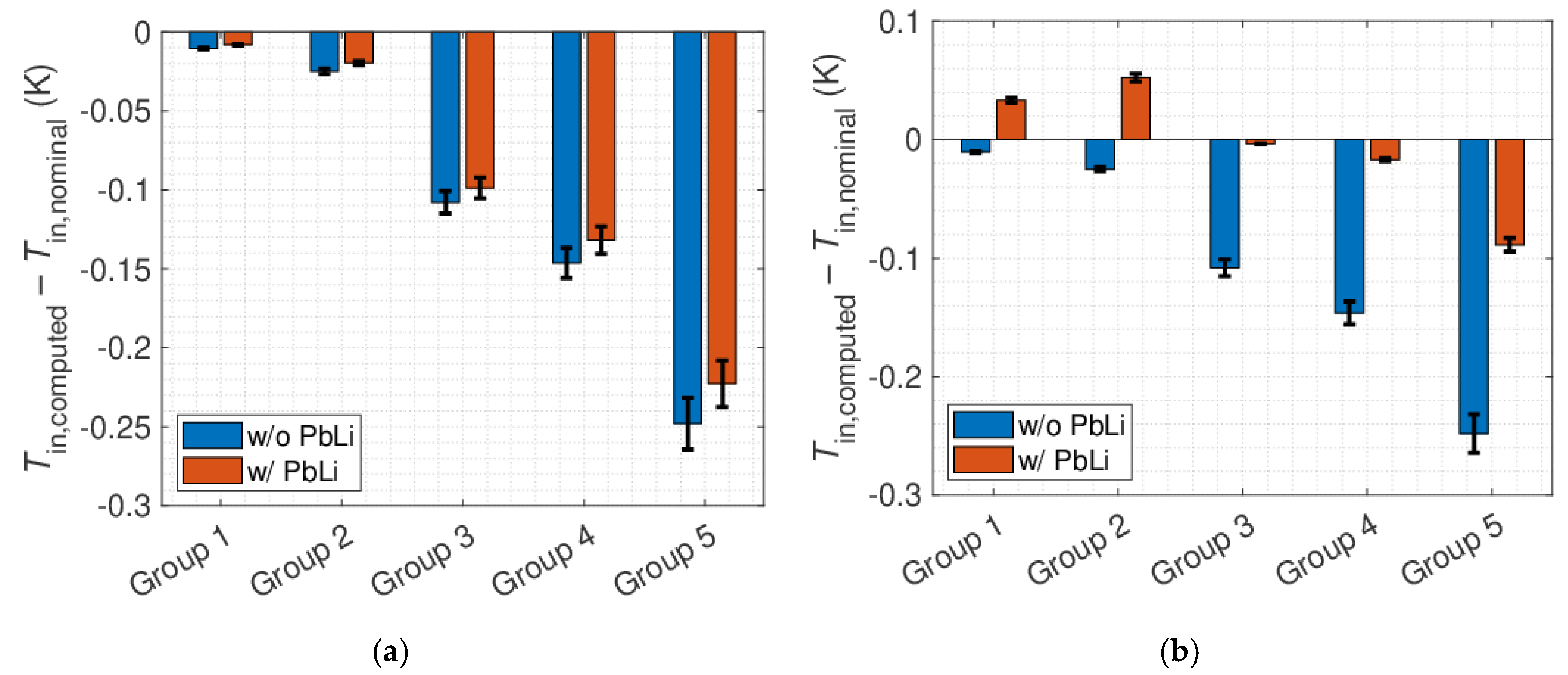
| Quantity | GCI2,3 | GCI1,2 | |rp×GCI1,2/GCI2,3−1| |
|---|---|---|---|
| keff,BZ | 0.008% | 0.0007% | 6 × 10–5 |
| keff,FW | 0.05% | 0.01% | 3 × 10–4 |
| Quantity | Value (kg/s) |
|---|---|
| min,1-5 and mout,1-4 | 5.7 |
| min | 28.3 |
© 2020 by the authors. Licensee MDPI, Basel, Switzerland. This article is an open access article distributed under the terms and conditions of the Creative Commons Attribution (CC BY) license (http://creativecommons.org/licenses/by/4.0/).
Share and Cite
Froio, A.; Bertinetti, A.; Del Nevo, A.; Savoldi, L. Hybrid 1D + 2D Modelling for the Assessment of the Heat Transfer in the EU DEMO Water-Cooled Lithium-Lead Manifolds. Energies 2020, 13, 3525. https://doi.org/10.3390/en13143525
Froio A, Bertinetti A, Del Nevo A, Savoldi L. Hybrid 1D + 2D Modelling for the Assessment of the Heat Transfer in the EU DEMO Water-Cooled Lithium-Lead Manifolds. Energies. 2020; 13(14):3525. https://doi.org/10.3390/en13143525
Chicago/Turabian StyleFroio, Antonio, Andrea Bertinetti, Alessandro Del Nevo, and Laura Savoldi. 2020. "Hybrid 1D + 2D Modelling for the Assessment of the Heat Transfer in the EU DEMO Water-Cooled Lithium-Lead Manifolds" Energies 13, no. 14: 3525. https://doi.org/10.3390/en13143525
APA StyleFroio, A., Bertinetti, A., Del Nevo, A., & Savoldi, L. (2020). Hybrid 1D + 2D Modelling for the Assessment of the Heat Transfer in the EU DEMO Water-Cooled Lithium-Lead Manifolds. Energies, 13(14), 3525. https://doi.org/10.3390/en13143525







